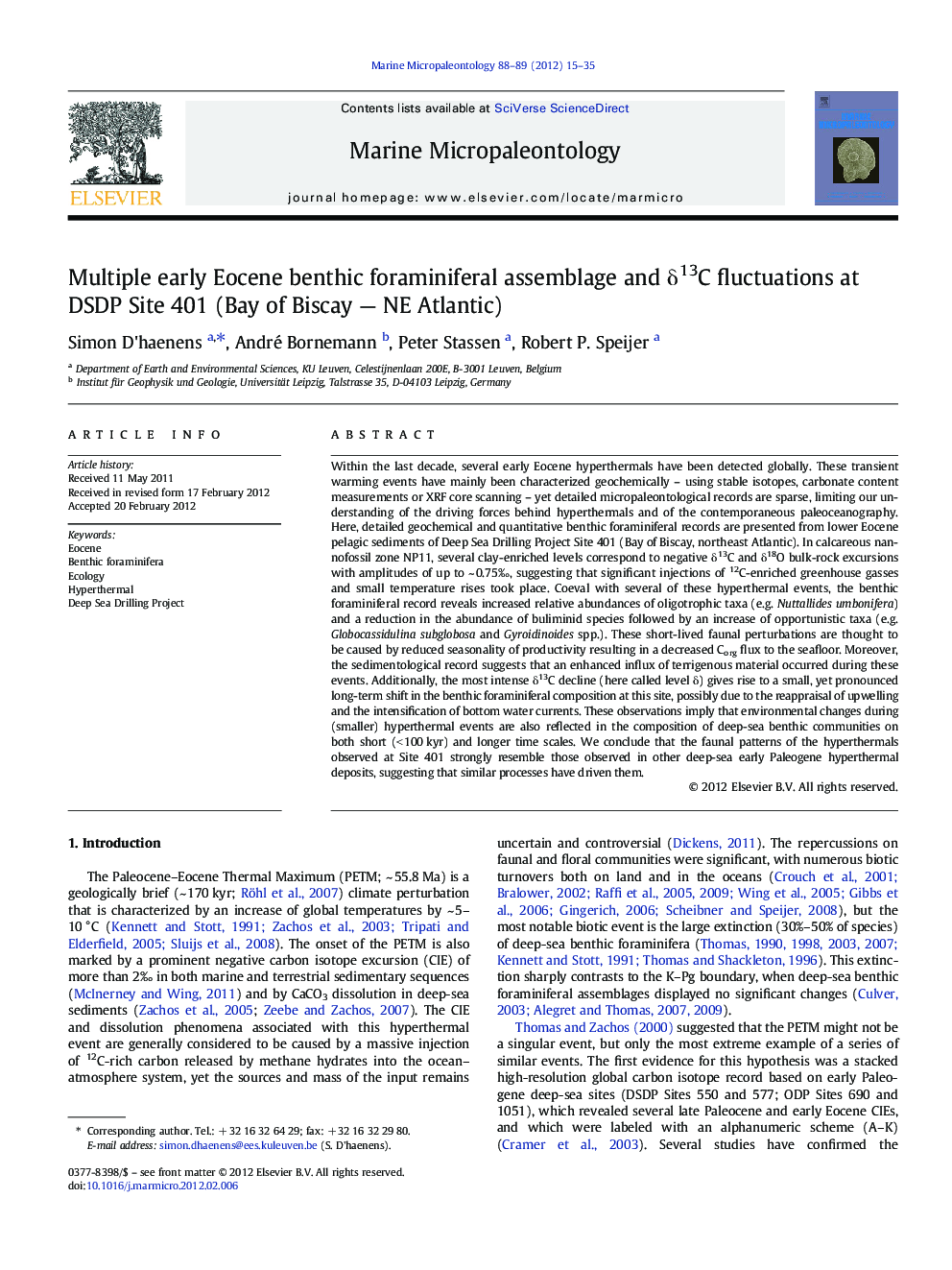| کد مقاله | کد نشریه | سال انتشار | مقاله انگلیسی | نسخه تمام متن |
|---|---|---|---|---|
| 4748996 | 1642192 | 2012 | 21 صفحه PDF | دانلود رایگان |

Within the last decade, several early Eocene hyperthermals have been detected globally. These transient warming events have mainly been characterized geochemically – using stable isotopes, carbonate content measurements or XRF core scanning – yet detailed micropaleontological records are sparse, limiting our understanding of the driving forces behind hyperthermals and of the contemporaneous paleoceanography. Here, detailed geochemical and quantitative benthic foraminiferal records are presented from lower Eocene pelagic sediments of Deep Sea Drilling Project Site 401 (Bay of Biscay, northeast Atlantic). In calcareous nannofossil zone NP11, several clay-enriched levels correspond to negative δ13C and δ18O bulk-rock excursions with amplitudes of up to ~ 0.75‰, suggesting that significant injections of 12C-enriched greenhouse gasses and small temperature rises took place. Coeval with several of these hyperthermal events, the benthic foraminiferal record reveals increased relative abundances of oligotrophic taxa (e.g. Nuttallides umbonifera) and a reduction in the abundance of buliminid species followed by an increase of opportunistic taxa (e.g. Globocassidulina subglobosa and Gyroidinoides spp.). These short-lived faunal perturbations are thought to be caused by reduced seasonality of productivity resulting in a decreased Corg flux to the seafloor. Moreover, the sedimentological record suggests that an enhanced influx of terrigenous material occurred during these events. Additionally, the most intense δ13C decline (here called level δ) gives rise to a small, yet pronounced long-term shift in the benthic foraminiferal composition at this site, possibly due to the reappraisal of upwelling and the intensification of bottom water currents. These observations imply that environmental changes during (smaller) hyperthermal events are also reflected in the composition of deep-sea benthic communities on both short (< 100 kyr) and longer time scales. We conclude that the faunal patterns of the hyperthermals observed at Site 401 strongly resemble those observed in other deep-sea early Paleogene hyperthermal deposits, suggesting that similar processes have driven them.
► We investigate early Eocene deep-sea deposits in the North Atlantic.
► Negative carbon and oxygen isotope excursions occur within five marly levels.
► A quantitative benthic foraminiferal study reveals associated oceanographic changes.
► Changes are related to hyperthermal events.
► These hyperthermals are expressed in a similar way as the PETM.
Journal: Marine Micropaleontology - Volumes 88–89, May 2012, Pages 15–35